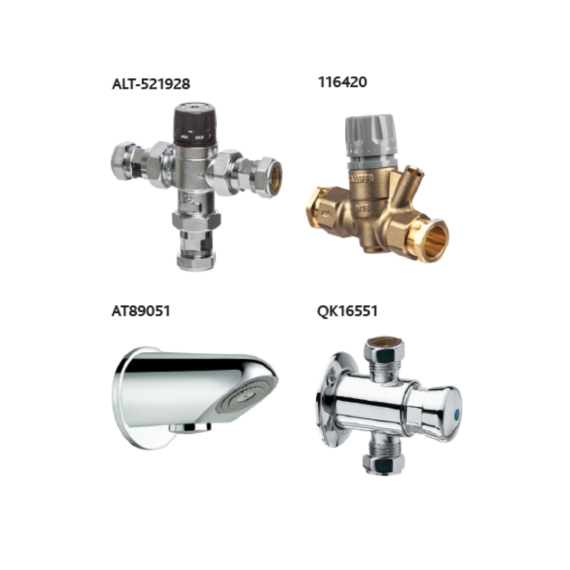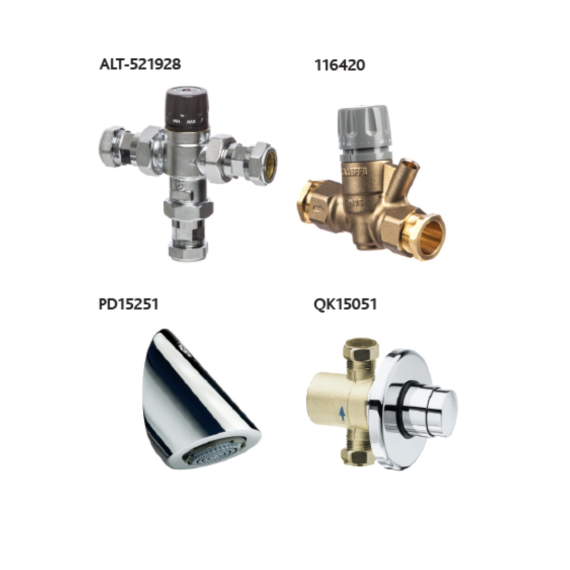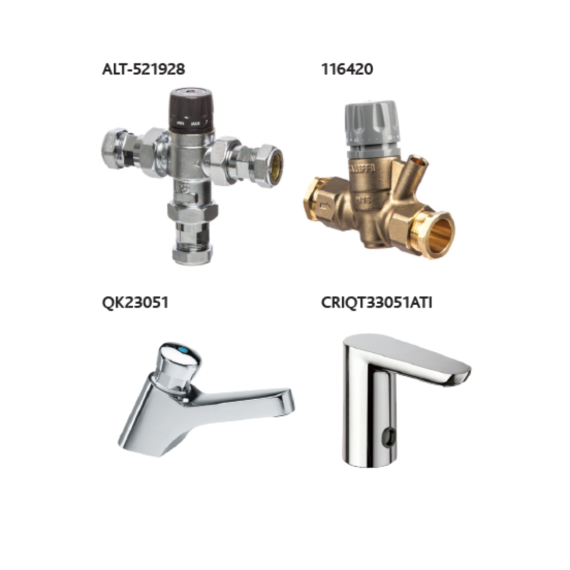Exploring the UK Commercial Bathroom Industry: Key Features and Trends
The UK commercial bathroom industry is a dynamic sector that caters to the design, installation, and maintenance of washroom facilities in various non-residential settings. From bustling offices and luxury hotels to schools, hospitals, shopping centres, and sports facilities, these bathrooms are distinct from domestic bathrooms due to their need to accommodate higher foot traffic, comply with strict accessibility regulations, and prioritize durability and ease of maintenance. Let’s delve into the key features that define commercial bathrooms in the UK and explore the latest trends shaping the industry.
Compliance with Regulations
The design and installation of commercial bathrooms are governed by stringent standards to ensure safety, accessibility, and functionality for all users.
- Equality Act 2010: Commercial bathrooms must be accessible to people with disabilities, incorporating features such as grab rails, emergency pull cords, and lowered sinks to accommodate wheelchair users. Adequate space is also essential to facilitate easy navigation for people with mobility challenges.
- Building Regulations (Part M): These regulations provide guidelines on the layout and features of commercial washrooms to ensure they meet the needs of disabled individuals, with specifications for door widths, turning space, and the height of fixtures.
Durability and Materials
Commercial bathrooms experience significantly more usage than residential ones, making durability a top priority. Materials used in these settings are chosen for their ability to withstand frequent use and potential misuse. Common choices include:
- Stainless Steel: Known for its resistance to corrosion and easy maintenance, stainless steel is often used for fixtures like taps, dispensers, and even some toilet cubicles.
- High-Pressure Laminate (HPL): This material is used for partitions and countertops because of its durability and scratch-resistant properties.
- Vitreous China: Sinks and toilets made from vitreous china offer a hard, glossy finish that is both long-lasting and easy to clean.
Water Efficiency and Sustainability
With growing awareness of environmental issues, water efficiency and sustainability have become central to the design of commercial bathrooms. Several water-saving technologies are now standard:
- Dual-Flush Toilets: These allow users to choose a lower water flow for liquid waste, helping to reduce water consumption.
- Sensor-Operated Taps and Low-Flow Showerheads: Automatic taps prevent water waste by shutting off when not in use, while low-flow showerheads maintain performance while using less water.
- Eco-Friendly Products and Materials: The use of recycled materials, sustainable building practices, and energy-efficient fixtures such as hand dryers contribute to a more eco-friendly commercial bathroom.
Industry Standards and Labelling Schemes
Industry standards and labelling schemes make adhering to water efficiency regulations easy, for example:
- Building Research Establishment Environmental (BREEAM): The Building Research Establishment set up BREEAM as a way to determine the environmental performance of buildings. BREEAM highlights the use of water in buildings. Points, which count towards the assessment rank, are awarded depending on the level of environmental efficiency achieved. Most building types can be specified and assessed which include healthcare, industrial, prisons, retail, education, offices as well as domestic housing.
- Unified Water Label (UWL): The Unified Water Label Scheme is independently supported by the Department for Environment, Food and Rural Affairs (DEFRA). It is a method of reviewing water efficient products driven by a regularly maintained database.Each product in the central database is tested and colour coded. A simple scale ranging from low to high water use provides an at a glance indication of its water saving performance. (water-efficiencylabel.org.uk)
Hygiene Considerations
In environments such as healthcare facilities, food service areas, and high-traffic public spaces, hygiene is a top priority. Commercial bathrooms are now commonly equipped with features that help to maintain high levels of cleanliness:
- Touchless Fixtures: Automatic taps, soap dispensers, and flush sensors reduce the need for users to touch surfaces, thereby minimizing the spread of bacteria and viruses.
- Anti-Microbial Surfaces: Materials and finishes that inhibit bacterial growth are increasingly used on countertops, door handles, and other frequently touched surfaces.
Aesthetics and Branding
Commercial bathrooms, particularly in luxury hotels, restaurants, and high-end retail settings, are often designed to enhance the overall brand experience. Businesses are recognizing the role that a well-designed bathroom plays in customer perception. Therefore, to select premium materials products such as taps, shower head can elevate the aesthetic of a bathroom, leaving a lasting impression on customers.
Industry Trends
The UK commercial bathroom industry is evolving rapidly, with several trends shaping its future:
- Modular Bathroom Pods: Pre-manufactured bathroom pods are gaining popularity in sectors such as hotels, student accommodations, and healthcare. These pods offer consistent quality and faster installation compared to traditional construction methods.
- Sustainability-Driven Innovation: New water-saving products, recycled materials, and low-impact manufacturing processes continue to emerge as businesses seek to reduce their environmental footprint.
Altecnic Commercial Washroom Solutions
The Altecnic range of Commercial Washroom products combines over 40 years of design and manufacturing expertise, ensuring the highest international standards of quality and accreditation. Made from the finest materials for maximum reliability and durability, these products are backed by a 5-year warranty, reflecting our confidence in their exceptional performance.
GROUP SHOWERS WITH EXPOSED CONTROLLER AND SHOWER HEAD
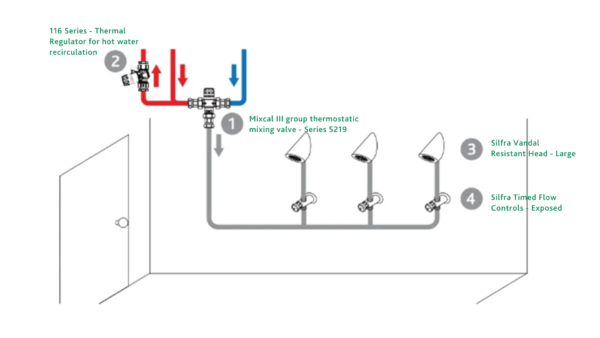
GROUP SHOWERS WITH EXPOSED CONTROLLER AND SHOWER HEAD
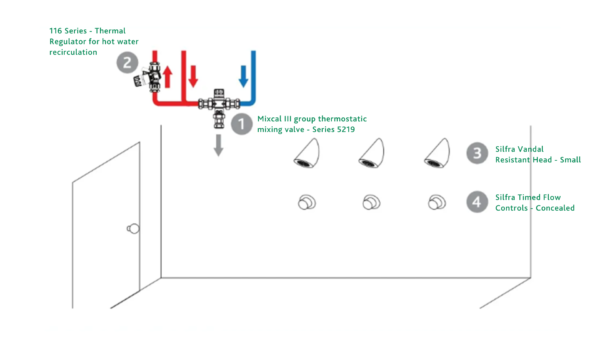
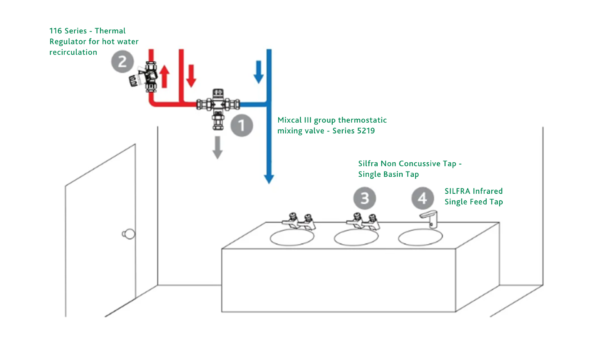
The commercial bathroom sector in the UK is a blend of functionality, design, and sustainability. As businesses recognize the importance of these spaces in shaping customer perceptions and meeting regulatory requirements, the focus on quality, accessibility, and eco-friendly solutions is set to grow. Whether in a luxury hotel or a high-traffic shopping centre, well-designed commercial bathrooms play a crucial role in providing a positive user experience while meeting the demands of modern society.

